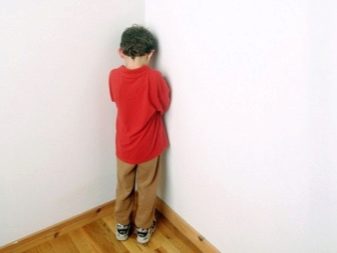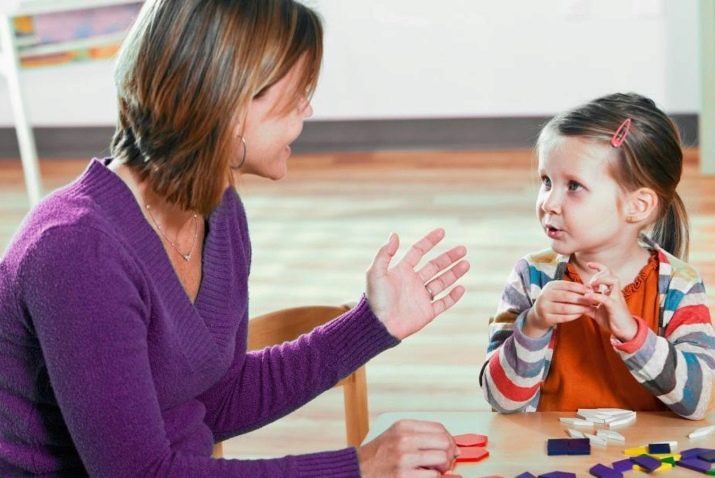How to overcome fear?

There are no fearless people in the world who are not afraid of anything. If a person suddenly becomes like this, he will die, because he will lose prudence, caution, the ability to critically assess what is happening around. But sometimes our fears significantly complicate our life, and then the question arises: how to cope with the manifestations of this strong primitive emotion?

The cause and psychology of fear
Fear is a basic innate emotion in the human body. According to some reports, even a fetus in the womb before its birth is capable of experiencing fear, and this allows us to assert with a clear conscience that the feeling of fear was not created by nature by chance. Thanks to him, humanity survives, fear makes a person more careful, more prudent, saves his life in dangerous situations. Thanks to fear, people have come up with many useful inventions that increase the safety and comfort of our daily life.
The feeling of fear triggers a mass of invisible physiological processes that instantly mobilize the human body, forcing it to act and think faster, move more actively, strength and speed increase. But at the same time, sometimes fears become an obsessive state. And then they are called phobias. If a healthy reaction is a fear in connection with a specific threat, then a pathological fear is an irrational horror, which the person himself cannot explain.
As a rule, we are all afraid of something, and this is determined genetically, passed down to us by inheritance from distant ancestors. For example, fear of the dark is inherent in almost all children and at least 10% of adults. It is just as normal to be afraid of heights, depths, open fire, death.Healthy fear makes a person stronger, after the threat has passed, it quickly passes, and the emotional state becomes even.
Pathological fear can occur in certain situations for a specific person, and it does not mobilize, but makes a person vulnerable: in a fit of panic, no one can make decisions, no one is able to become stronger.
Fear constrains, causes tangible physical symptoms - dizziness, nausea, tremors, changes in blood pressure levels, and sometimes fainting, involuntary defecation or urination. In a panic attack, a person suffering from a phobia is not adequate in principle.

Needless to say that pathological fear makes the personality subordinate, it dictates its own conditions. A person begins to diligently avoid objects and situations that cause panic, and sometimes he has to change his entire way of life for this. Judge for yourself: people with claustrophobia (fear of confined spaces) walk even to the upper floors of multi-storey buildings, just not to be in the atmosphere of an elevator car, and people with social phobia sometimes refuse to leave the house altogether, go to the store, to work, or enter public transport , they become prisoners of their own fear.
With trypophobia, a person is frightened by cluster holes, and an attack of panic can come from one type of dishwashing sponge or a piece of cheese, and a parez does not allow a person to go to the toilet when needed, if he is in a public place, the fear of a public toilet simply does not allow him to be released bladder.
Most of us are characterized by normal healthy fears, or rather excitement, a feeling of anxiety, usually before important events, the result of which we cannot predict accurately (before an operation, an exam, an interview). Such experiences do not deprive us as a whole of adequacy, but they can interfere with falling asleep and sleeping normally, otherwise they do not cause significant harm. It so happened that people tend to be afraid of the unknown, and the upcoming event is shrouded in it.
Pathological fears, even on the eve of an event, significantly impair the quality of life - phobias on the eve of the operation may experience severe anxiety, on the verge of anxiety, and when they collide with a frightening object, they completely lose all control over themselves.

To understand how to overcome fear, you need to clearly understand the laws by which it develops:
- in the central region (limbic system) of the brain, areas of the amygdala are activated;
- a danger signal (true or fictional) is processed by the amygdala and a process called "fight or flight" is started;
- since both running and fighting need strength, the brain launches the process of general mobilization in a split second - blood flow is directed to a greater extent to the muscles, blood flows out of the internal organs and skin;
- hair on arms and legs stands "on end" (nature created this reflex in nature to intimidate enemies);
- the work of the sweat glands is activated (apparently, also to intimidate enemies, but already with a smell), the body temperature decreases;
- the adrenal cortex produces a large amount of the hormone adrenaline, which enters the bloodstream and immediately leads to a decrease in the depth of breathing, increased heart rate and dilated pupils;
- the skin turns pale, the production of sex hormones drops sharply, a painful sensation appears in the abdomen;
- the mouth dries up, it becomes difficult to swallow.
If the fear is healthy, then after analyzing the situation and action (run or hit), the body's work is restored quickly. In the case of panic fear (phobias), a person can lose consciousness, balance, and self-control in most cases is impossible.

Thus, the main reason for our fear is our nature, our own brain and those ancient programs of survival (the instinct of self-preservation) that are embedded in it. But not every fear turns into a mental disorder, and here's why. The likelihood that phobias will occur is increased if:
- the child is raised in an authoritarian family, where he is deprived of the right to vote, such children do not know how to make decisions;
- the child grows up in an atmosphere of overprotection, and in this case, the child also does not know how to make decisions, but is also afraid of the world outside the window (parents carefully instill from childhood that he is extremely dangerous);
- the child is not given attention, he has no one to share his fears with (the principle from the cartoon about the kitten Gave “let's be afraid together” is very important in childhood!);
- the child is exposed to situations that are terrible for him, punishments (put in a dark corner, closed in a closet);
- the child is deliberately scared - "Babay will come", "if you get sick, you will die", etc.


Fear does not appear only when there is an obvious threat. It can be a signal of a previous experience (if a dog has bitten a person, he is more likely to be afraid of dogs), and fear can also be the cause of an unexperienced experience (I am afraid of poisonous snakes, although I have never encountered them before). Sometimes fear is imposed on us from the outside, and here we need to say "thanks" to television, which often talks about terror, murder, medical errors, dangerous diseases that spread rapidly), cinema with its horror films and thrillers, books and "benevolent" acquaintances who are always ready to tell a "scary story" from the life of their own or their friends.
To understand what exactly are the reasons for your fear, you need not only to remember your childhood, parents, their educational methods, but also to soberly assess who you are. It has been proven that people with a fine mental organization, impressionable, vulnerable, shy, who have experienced certain difficulties in communication and are experiencing them now, lonely people, are more susceptible to fears.
Of course, you cannot change the type of organization of the nervous system, but even if all the described characteristics are about you, you should not think that fear cannot be defeated.

How to deal with symptoms on your own?
Before answering this question, you need to clearly understand for yourself what kind of fear you are dealing with. If this is a healthy defense mechanism, it is impossible to defeat it, and it is not necessary, without it you cannot survive. If we are talking about pathological fear (phobia, a state on the verge of a phobia), then it is also almost impossible to overcome such fear on your own - you need the help of a specialist (psychologist, psychotherapist). In the battle with your fear, you will need the main weapon - a clear understanding that you need to fight not with emotion, but with the reasons that caused it.
A specialist is needed to determine these reasons as accurately as possible. Trying to independently deal with the manifestations (symptoms) without analyzing the causes and correcting is a waste of time. You can attend trainings of fashionable coaches as much as you like, study meditation, read literature from the category "100 Tips - How to Find Fearlessness." But without establishing the root causes of your fear, all this will be useless. Fear will certainly return as soon as circumstances and situations arise that are similar to those that initially caused the panic.
If your fear is not accompanied by severe panic attacks, you can try to look for the reasons yourself. In a calm state, recall as many events from childhood as possible associated with possible situations in which you saw, heard, perceived the frightening object. Afraid of taking the subway? Maybe you got lost there as a child? Or have you watched a disaster film in which people died in the subway? Remember how you were raised, how often did you experience fears in childhood and adolescence?
You can find a lot of answers to a variety of questions inside yourself, you just need to ask these questions precisely and specifically.

Next, you need to assess the reality - in what situations does an attack of fear most often begin, what precedes this? Does a particular object cause fear, or are you afraid of something that you cannot even describe in words?
Having identified the object of fear (in our case, this is the subway), the cause of the fear - a negative experience associated with the subway, an incident, or the general impression of the film, it's time to start changing the erroneous attitudes to the correct ones. Begin to gradually notice the positive aspects of this type of transport - speed, safety, the opportunity to meet interesting people during the trip, or simply spend time on the road with a book. This should become actually auto-training.
Then move on to a gradual immersion in the metro environment. Stand at the station door today. Stop by tomorrow and stand in the lobby. Be sure to note that nothing terrible happens in this case. On the third day, you can buy a ticket and go downstairs, and then try to get into the carriage and drive through a station or two. So you don't even fight with fear, but accustom your body to it, let it be afraid in moderation.

The danger that you deal with every day is devalued and less perceived. Notice how quickly people get used to the situation in war or in a natural disaster zone. You can achieve the same effect. If initially the fear is quite strong, enlist the support of a loved one, comrade, relative - let it be like standing in the subway with you (again, we return to the cartoon principle “let's be afraid together”).
A similar method can be used to get used to any frightening circumstance or object. It is very important not to avoid, but to face the fear. No wonder this is what the samurai teachers advised. Avoidance only aggravates the fear. That is why advice like "if you are afraid of the metro - move by bus" is harmful and dangerous, although in the soul of every fearful they certainly find a lively response and approval.

In the process of "getting used to" fear, internal adaptation to it, There are a few practical tips that will help you quickly cope with expressions of emotion if it suddenly catches up with you at any stage of your struggle.
- Be proactive. An attack of obsessive fear usually does not start spontaneously, after observing yourself, you will find certain "harbingers" - anxiety, tremors, weakness, etc. Having felt these signs, try to switch your attention to something positive. To do this, you can start and carry with you a small talisman (an object that is associated for you with a pleasant event, a person). Hold it, look at it, try to reproduce as accurately as possible the memories of the day when you received this object, the appearance of the person who presented it to you or was near. This will help reduce anxiety by giving your brain another task.
- Pain to help. The pain impulse is able to instantly switch your brain to the protection mode, it will begin to solve the current "problem", and the development of fear will be suspended. Of course, we are not calling for self-mutilation and self-harm. It is enough to wear a thin pharmacy rubber band on the wrist, which can be pulled and released at a terrible moment. You can also pinch yourself.
- Learn to relax. If the situation allows, then at the first sign of impending fear, sit comfortably, take a free pose. Do not cross your arms and legs, feel how you breathe in and out. Unbutton the collar of the shirt if necessary, relax the belt. Tense specific muscle groups (for example, buttocks or legs) arbitrarily, hold for about five minutes and relax. Try to do this several times. Master a few basic breathing exercises - it will also come in handy.
Important! In pathological fear with panic attack, the method does not work as the behavior becomes uncontrollable.
- Peer into the details... If fear is imminently imminent, try to consider it in detail, focus on individual elements. Consciously pay attention to what you see around, how it looks, what color it is, what it smells like. In the case of the metro, consider people, try to determine their age and profession by their appearance. Listen to their conversations. This simple process can help you distract yourself. And inhaling the smells of the underground will help you adapt to fear faster. Mathematical counting also helps very well - count the people in the carriage, try to count the number of stations on the subway diagram, count separately women, men, children.
- Drink some water, put a lollipop in your mouth... You can take them with you when you leave home. This will help switch the body from a mobilization mode to a food digestion mode. Use this method only if you are not experiencing loss of consciousness panic attacks.
Improve your self-esteem - it is the underestimated level that most often appears in the medical records of patients with phobias. Sign up for courses, start hiking, interact with other people, and don't be isolated.


Ways to overcome phobias with the help of specialists
All of the above methods, alas, are not suitable in the case of phobias. If a person suffers from irrational fear, then attacks of this nature cannot be controlled by him, and therefore it will be difficult to do something on his own. Specialists who have a variety of techniques and methods of providing help can help fight fear.
Educator and parents
In the case of children's fears, an experienced teacher or educator can also help, but on condition that the fears began recently. Neglected forms of phobias are not cured by pedagogical methods. What can a teacher do? He can create an environment for the child in which there will be nothing scary, and each new action and task will be discussed and prepared in advance. This will help reduce the child's high levels of anxiety. He will gradually begin to relax.
When this happens, the teacher will pay special attention to training the child's will and sense of duty. Both of these feelings help to cope with fears in most cases.
A lot depends on parents and teachers. If a child is fearful, it is very important for him to know that they are not laughing at him, but that they are insuring him. Remember how we teach babies to take their first steps? We support the hand. And at some point we let go. What does the child do while doing this? He immediately falls, noticing that he is no longer being held. Children behave in exactly the same way while learning to ride a bicycle, ice skate.
But if at this stage the child is convinced that he had not been held before, he was driving himself, then we can assume that the training ended in complete success. That is, the child just has to believe that he can do it. And then the fear recedes.

Psychotherapist, psychiatrist
There are various methods for correcting phobias, and today the most effective are psychotherapeutic methods. The "in vivo" immersion method has proven itself well, in which a person essentially has to undergo shock treatment.
Immersion in an atmosphere of fear, dosed, regular, carried out under the supervision of a specialist, helps not to overcome the horror, but to learn to coexist with it peacefully and calmly. The method is based on the observations of specialists who studied the adaptation mechanisms of people in the zones of hostilities and disasters. It turned out that you can gradually get used to fear, and at the same time its intensity and strength will subside. The brain will stop perceiving danger as an emergency, and will begin to treat it as an everyday occurrence.
In practice, this can be done in different ways. It all depends on the individual mental characteristics of a person. One needs to be placed in a serpentarium so that he gets used to snakes, while the other only needs to visit the pet store and view the creeping reptiles from a safe distance. The fear of water can be overcome with swimming and diving lessons from an experienced professional in these areas, and the fear of the dark can be any interesting activities that are possible only in the dark (for example, drawing with light pens or watching filmstrips).
The effectiveness of the in vivo method is about 40%, which means that four out of ten fobs are helped to cope with a mental disorder.

The most common method of treating irrational fears in psychiatry is cognitive behavioral therapy. It includes several stages. At the first stage, the doctor must discover all possible situations and circumstances of the occurrence of panic, as well as the reasons that led to the development of the phobia. This is done by interviewing, testing. As a result, an individual list of "dangerous" situations will be compiled.
Further, the specialist proceeds to replace the patient's incorrect mental attitudes with the correct ones. This is done through conversations, neurolinguistic programming, hypnosis sessions. The challenge is to eliminate the mindset that leads humans to believe that tiny kittens can be deadly, that bats and spiders threaten human life, that there can be danger in the dark, that society is hostile.
Correct attitudes, gradually becoming our own, solve the problem of the irrationality of fear... Man now not only understands that it is stupid to be afraid of a spider, but sees great benefit for the planet in spider life. He admits without horror the fact of the existence of a spider and is ready to put up with him. Of course, no one forces a spider to love, this is not required. But the panic attacks, with which every encounter with arthropods previously proceeded, will no longer exist.
At the final stage of cognitive-behavioral psychotherapy, a gradual immersion in dangerous situations begins. From the compiled list, they first take those that initially caused the least anxiety and sort out all the circumstances according to the increasing assessment of the anxiety scale. In other words, the most severe nightmares, which before the start of treatment caused sacred horror and dismay, will begin to be embodied in reality by the last.
The specialist observes the patient's reactions, conducts interim conversations, discusses what the person has experienced, and increases or decreases the stress load as needed.

Not all situations can be experienced in reality. For example, a person is afraid of space and stars or aliens. Do not send him to the ISS so that he can personally make sure that there are no green men in orbit!
In this case, specialists can use hypnosuggative techniques, in which the situation is thought up by the doctor and transmitted to the patient under hypnosis. A person believes, being in a trance, that he is currently present on the ISS or on Mars, that he has met an alien creature. He can communicate with the doctor, convey to him everything that he sees and feels. This is how immersion and adaptation occurs, and ultimately - the devaluation of fear as such.
Sometimes psychotherapy is supplemented with medication, but this is not done so often. The point is, there is no specific cure for fear. Tranquilizers only help suppress anxiety attacks, they do not treat the condition and its causes, and besides, such drugs can be addictive. Antidepressants help with the accompanying state of depression (people with phobias are very susceptible to this scourge).
Sleep aids may be recommended to help normalize sleep, and doctors often recommend sedatives to help calm you down.
But not every case of phobia needs the application of advances in pharmacology.Moreover, one cannot speak of a separate treatment with pills. Without psychotherapy, no pills and injections will help with a phobia.


Helpful advice from a psychologist
The overwhelming majority of pathological fears that prevent us from living fully and make us dream of getting rid of them are formed in childhood. Therefore, psychologists recommend that parents pay special attention to this issue, because we are quite capable of raising a person with a normal healthy level of fear of something. To do this, try to create an environment of mutual trust in the home and family from an early age - fears become less when they are spoken and discussed.
- Don't scoff at child fear, no matter how ridiculous it may seem to you. If the baby claims that Buka lives in the closet, it means that in his perception of the world this is really so. Listen carefully and work together to come up with a way to defeat Buku (this can be anything from a full meal to a bedtime ritual).
- Always make time for your child. There is never a lot of affection and attention. This is his "safety rope", which will help to cope with any difficulties, including fear.
- Don't Spontaneously Provoke Fears - do not make up scary stories about naughty kids who are taken by a forest monster, do not teach a child to swim, pushing them off the side or pier in spite of protests.
- Conquer Your Own Adult Fears... Children often inherit our fears only because they believe that their parents' worldview is the only correct one. A mother who is afraid of mice is more likely to have a child who will also be afraid of mice. And genes have nothing to do with it. It's just that the child from childhood will see the reaction of the mother to the mouse and will definitely copy it.

Experts advise against scolding and punishing a child for his fears, ignoring them, considering them frivolous. Also, you should not take a child to a funeral before adolescence, show him horror films.
It is impossible to link the death of someone close to illness, even if the cause of death was illness - a clear connection between the concept of "being ill" and the concept of "dying" will form in the child's mind. This increases anxiety every time a family member gets cold or sick. It is very important not to refuse the help of psychologists, psychotherapists, if you cannot cope with the problem yourself or your child on your own.
Fear therapy is a complex area of psychotherapy, and you should not count on success on your own. Entrust the task to a specialist. The sooner you do this, the better.









